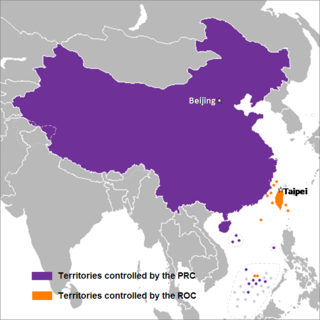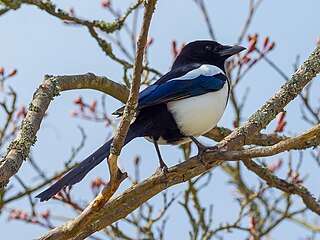
Green is the color between blue and yellow on the visible spectrum. It is evoked by light which has a dominant wavelength of roughly 495–570 nm. In subtractive color systems, used in painting and color printing, it is created by a combination of yellow and blue, or yellow and cyan; in the RGB color model, used on television and computer screens, it is one of the additive primary colors, along with red and blue, which are mixed in different combinations to create all other colors. By far the largest contributor to green in nature is chlorophyll, the chemical by which plants photosynthesize and convert sunlight into chemical energy. Many creatures have adapted to their green environments by taking on a green hue themselves as camouflage. Several minerals have a green color, including the emerald, which is colored green by its chromium content.

Tea is an aromatic beverage commonly prepared by pouring hot or boiling water over cured or fresh leaves of the Camellia sinensis, an evergreen shrub native to East Asia. After water, it is the most widely consumed drink in the world. There are many different types of tea; some, like Darjeeling and Chinese greens, have a cooling, slightly bitter, and astringent flavour, while others have vastly different profiles that include sweet, nutty, floral, or grassy notes. Tea has a stimulating effect in humans primarily by its caffeine content.
Mainland China, also known as the Chinese mainland, is the geopolitical and geographical area under the direct jurisdiction of the People's Republic of China (PRC). It includes Hainan, which is an island province in the South China Sea, and excludes the special administrative regions of Hong Kong and Macau, even though both are mostly on the geographic continental landmass ("mainland").

Chinese unification, also known as the Cross-Strait unification or Chinese reunification, is the potential unification of territory currently controlled by the People's Republic of China and the Republic of China under one political entity, possibly the formation of a political union between the two republics. Together with full Taiwanese independence, unification is one of the main proposals to address questions on the political status of Taiwan, which is a central focus of Cross-Strait relations.

Magpies are birds of the Corvidae family. The black and white Eurasian magpie is widely considered one of the most intelligent animals in the world and one of only a few non-mammal species able to recognize itself in a mirror test. In addition to other members of the genus Pica, corvids considered as magpies are in the genera Cissa, Urocissa, and Cyanopica.

Jade is an ornamental mineral, mostly known for its green varieties, though it appears naturally in other colors as well, notably yellow and white. Jade can refer to either of two different silicate minerals: nephrite, or jadeite.

Green tea is a type of tea that is made from Camellia sinensis leaves and buds that have not undergone the same withering and oxidation process used to make oolong teas and black teas. Green tea originated in China, but its production and manufacture has spread to other countries in East Asia.

The 2008 Summer Paralympic Games, the 13th Paralympics, took place in Beijing, China from September 6 to 17, 2008. As with the 2008 Summer Olympics, equestrian events were held in Hong Kong and sailing events in Qingdao.

Celadon is a term for pottery denoting both wares glazed in the jade green celadon color, also known as greenware, and a type of transparent glaze, often with small cracks, that was first used on greenware, but later used on other porcelains. Celadon originated in China, though the term is purely European, and notable kilns such as the Longquan kiln in Zhejiang province are renowned for their celadon glazes. Celadon production later spread to other parts of East Asia, such as Japan and Korea as well as Southeast Asian countries such as Thailand. Eventually, European potteries produced some pieces, but it was never a major element there. Finer pieces are in porcelain, but both the color and the glaze can be produced in stoneware and earthenware. Most of the earlier Longquan celadon is on the border of stoneware and porcelain, meeting the Chinese but not the European definitions of porcelain.

Fried rice is a dish of cooked rice that has been stir-fried in a wok or a frying pan and is usually mixed with other ingredients such as eggs, vegetables, seafood, or meat. It is often eaten by itself or as an accompaniment to another dish. Fried rice is a popular component of East Asian, Southeast Asian and certain South Asian cuisines. As a homemade dish, fried rice is typically made with ingredients left over from other dishes, leading to countless variations. Fried rice first developed during the Sui Dynasty in China and as such all fried rice dishes can trace their origins to Chinese fried rice.

The Green Standard Army was the name of a category of military units under the control of Qing dynasty China. It was made up mostly of ethnic Han soldiers and operated concurrently with the Manchu-Mongol-Han Eight Banner armies. In areas with a high concentration of Hui people, Muslims served as soldiers in the Green Standard Army. After the Qing consolidated control over China, the Green Standard Army was primarily used as a police force.

Yellow tea can refer to Chinese huángchá and Korean hwangcha.

Grass jelly, or leaf jelly or herb jelly, is a jelly-like dessert eaten in East Asia. It is created by using the Platostoma palustre plant and has a mild, slightly bitter taste. It is served chilled, with other toppings such as fruit, or in bubble tea or other drinks. Outside Asia, it is sold in Asian supermarkets.

Tea processing is the method in which the leaves from the tea plant Camellia sinensis are transformed into the dried leaves for brewing tea.

Color in Chinese culture refers to the certain values that Chinese culture attaches to colors, like which colors are considered auspicious (吉利) or inauspicious (不利). The Chinese word for "color" is yánsè (顏色). In Classical Chinese, the character sè (色) more accurately meant "color in the face", or "emotion". It was generally used alone and often implied sexual desire or desirability. During the Tang Dynasty, the word yánsè came to mean all color. A Chinese idiom which is used to describe many colors, Wǔyánliùsè (五颜六色), can also mean colors in general.

China was the host of the 2008 Summer Paralympics, held in Beijing. China's delegation included 547 people, of whom 332 were competitors. The athletes, 197 men and 135 women, ranged in age from 15 to 51 and competed in all twenty sports. 226 of the competitors participated in the Paralympic Games for the first time. The delegation was the largest in Chinese history and at the 2008 Games. China topped the medal count at the 2004 Summer Paralympics in Athens. China dominated the medal count winning the most gold, silver, bronze, and total medals by a wide margin in Beijing.

Lu'an Melon Seed, also known as Lu'an Leaf, is a green tea from Lu'an City, Anhui Province, China. This is a famous green tea and is listed on virtually all lists of famous Chinese teas. The literal translation for Lu'an Guapian Tea is Lu'an Melon Seed Tea.

The China National Convention Center, previously known as the Olympic Green Convention Center is a convention center located in the Olympic Green in Beijing.

Green Book is a 2018 American biographical comedy-drama directed by Peter Farrelly. Set in 1962, the film is inspired by the true story of a tour of the Deep South by African American classical and jazz pianist Don Shirley and Italian American bouncer Frank "Tony Lip" Vallelonga who served as Shirley's driver and bodyguard. The film was written by Farrelly, Brian Hayes Currie and Vallelonga's son, Nick Vallelonga, based on interviews with his father and Shirley, as well as letters his father wrote to his mother. The film is named after The Negro Motorist Green Book, a mid-20th century guidebook for African-American travelers written by Victor Hugo Green.


















